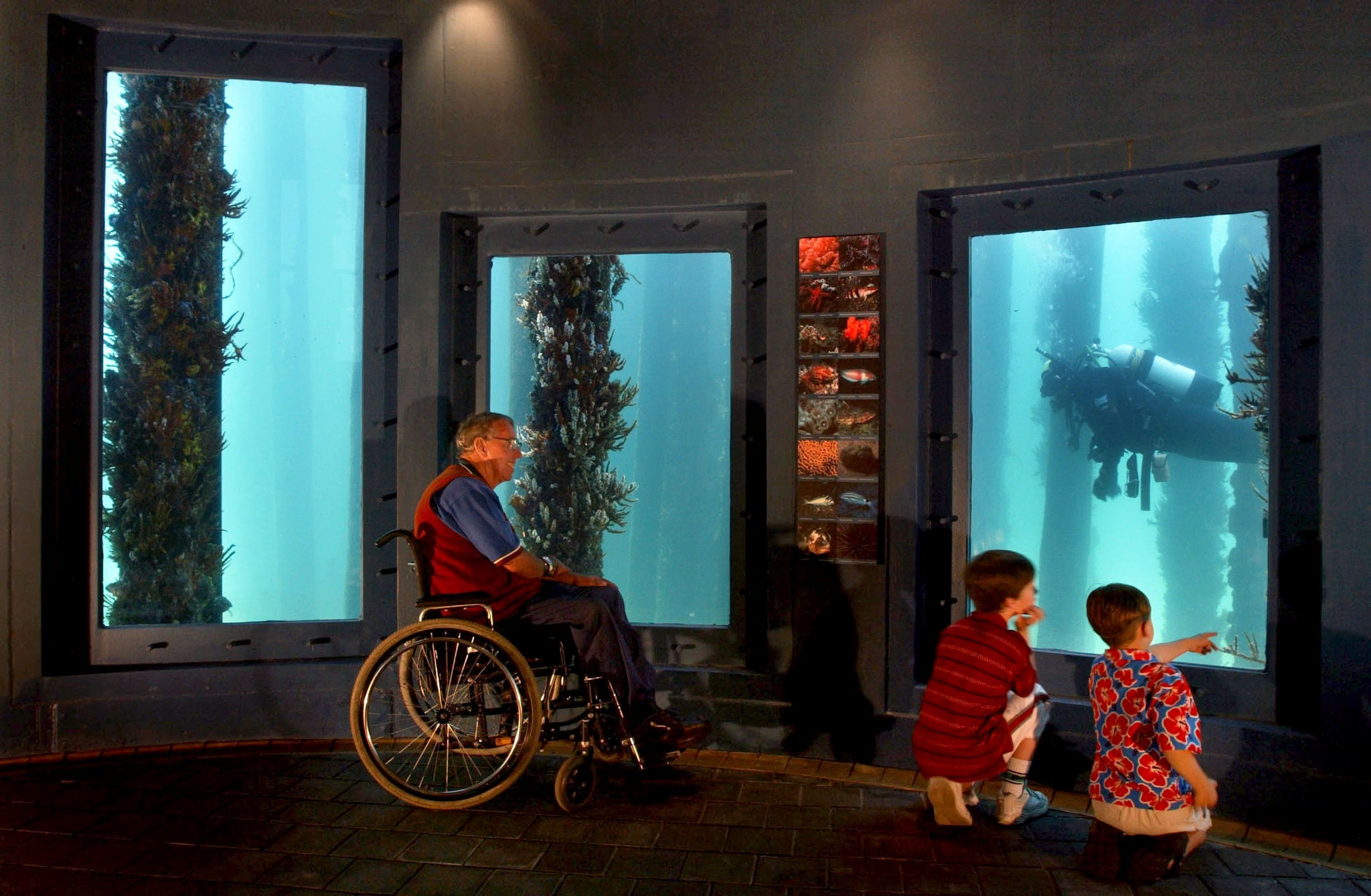Busselton Jetty welcomes travellers of all abilities
Heritage-listed Busselton Jetty Incorporated (BJI) in Western Australia is the longest in the Southern Hemisphere. It’s also fully accessible.
Busselton Jetty Incorporated (BJI) is also home to the world’s largest underwater observatory. More than 320,000 people visited the jetty in 2022–23. At 2 km long, it has an electric train to get from one end to the other. You can also stroll at your own pace and take in the scenery.
Each element of the jetty experience is accessible for travellers with disabilities. Several train carriages have wider doors to welcome wheelchairs and mobility aids. The underwater observatory has a mechanical lift operated by staff and volunteers.
‘Inclusion is central to everything we do,’ says BJI’s Marketing Manager, Charlene Sephton.
Getting it right from the start
Operating over water and in a fixed jetty footprint is challenging. BJI worked with community and local government experts to find solutions.
When planning a new underwater observatory and end-of-jetty precinct, BJI consulted community members with disabilities. Together they co-designed the development. Recommendations included:
- stair sleds
- ramp design
- hearing augmentation improvements
- universal amenities
- lifts
- other mobility aids.
BJI was mentored as part of the Accessible Tourism Mentoring Pilot Project in 2022. It is one of 10 Project Champions. This pilot project delivered by Austrade received joint Commonwealth, state and territory funding.
BJI was awarded Accessible Tourism Accreditations from Tourism Council Western Australia. This recognises its ability to cater for visitors with:
- limited mobility
- mobility aids
- cognitive disabilities
- autism.

Big benefits from small changes
‘Subtle changes can make a big impact, without spending money. For example, we made small improvements to our website. We also have a tour video available in AUSLAN,’ says Sephton.
BJI’s commitment to inclusion is paying off. In 2022–23, the jetty accepted 1,628 companion cards (worth almost $20,000). A companion card is issued to people with a disability who require attendant care.
But according to Cooper Shreeve, Marketing Officer, ‘the smiles on people’s’ faces is the biggest reward.’
Exciting new experiences
BJI has installed 13 underwater sculptures by local Western Australian artists. These form an underwater sculpture park and artificial reef trail. This is an attraction for swimmers, snorkellers and scuba divers.
BJI is working with local company Swan Dive to make this experience inclusive. Swan Dive has a wheelchair lift installed on its boat for divers who use wheelchairs. The company also runs an accessible diving course.
‘We didn’t know this option existed. We now know there are lots of people who will happily take up this opportunity,’ says Shreeve.
The iconic blue boatshed buildings on shore have also had a facelift. There are new accessible counters, wider walkways and new signage to highlight inclusive tourism offerings.
Learn more
Supporting visitors with disability can give your business access to a growing market.
Accessible tourism is a priority of THRIVE 2030, the national long-term strategy for the visitor economy.
The Australian Tourism Export Council (ATEC) is one industry organisation offering accessibility training. Its Accessible and Inclusive Host online module is a diversity-focused business development program with practical learning resources. It will help your business welcome guests from all life stages, backgrounds and abilities.
Growing the visitor economy
THRIVE 2030 is Australia’s national strategy for the long-term, sustainable growth of the visitor economy.